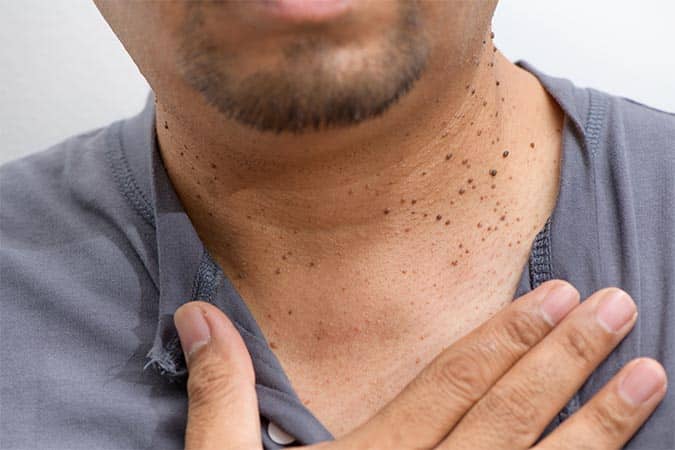What is Seborrheic Keratosis?
Seborrheic keratosis is a common, noncancerous skin growth that tends to appear as people age. It usually appears as a wart-like or waxy growth and is often found on the face, chest, back, or shoulders. It is not known what causes seborrheic keratosis, though the growths tend to run in families, so genes may play a role. Individuals over the age of 50 are generally more likely to develop this condition.
A seborrheic keratosis may present with the following signs and symptoms:
- Ranges in color from tan to brown to black
- Has a round or oval shape
- Appears to be “stuck on”
- Is flat or slightly raised with a scaly look
- Ranges in size from very small to more than 1 inch across
- May be itchy
Be sure to see a dermatologist if many growths develop over a short period of time, the growths become irritated or bleed, or they change in size or color.
Who is a Good Candidate for Seborrheic Keratosis Treatment?
Individuals who are unhappy with the appearance or feel of their seborrheic keratosis can benefit from treatment. You should also see a dermatologist if many growths develop over a short period of time, the growths become irritated or bleed when clothing rubs against them, or there are sores or growths that begin to grow rapidly. To properly diagnose and treat your growth, a consultation with one of our dermatologists is needed. Contact our office today to schedule your appointment!
What to Expect During Seborrheic Keratosis Treatment?
Your dermatologist will likely be able to diagnose seborrheic keratosis by sight. However, if there is any uncertainty, a biopsy may be performed. Because these growths are harmless and not contagious, they often do not need treatment. However, if they begin to become irritated by clothing or you do not like how they look, they can be removed.
Seborrheic keratosis treatment options include:
- Cryosurgery: Liquid nitrogen is used to freeze off the growth.
- Curettage: Your dermatologist will use an instrument called a curette to scrape off the growth. This technique is sometimes used with electrosurgery.
- Electrosurgery: An electrical current is used to scrape off the growth.
Following Seborrheic Keratosis Treatment
Following removal of your seborrheic keratosis, your skin may be lighter at the treatment site which usually becomes less noticeable over time. There is no downtime required following treatment, so patients can return to school or work as soon as they feel comfortable. Your dermatologist will provide you with instructions on how to care for the treatment site following removal.
Schedule a Consultation
To learn more about seborrheic keratosis treatment at HMGS Dermatology, contact our office today! A consultation is the first step toward treatment, during which you can discuss your symptoms with your dermatologists. Our team will then create a treatment plan that is right for you.

Get Started With A Visit!
Fill out the form below and we will reach out to you shortly to schedule an appointment.